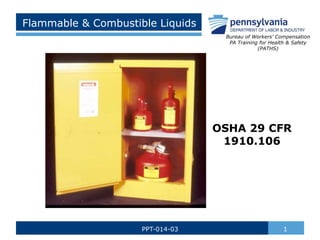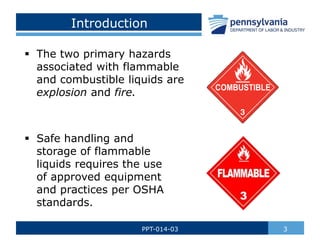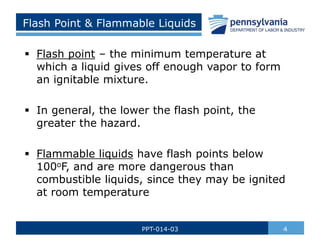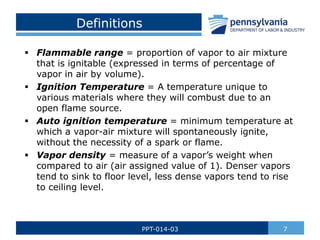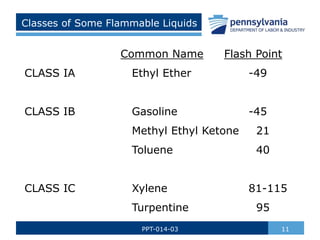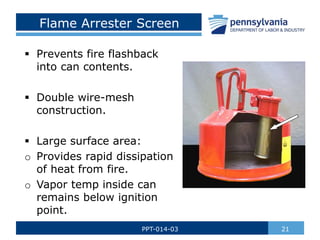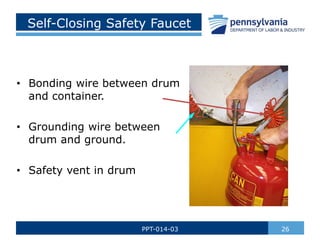The document provides essential information on the safe handling and storage of flammable and combustible liquids, focusing on hazards such as fire and explosion. It emphasizes the importance of approved equipment and practices, outlining definitions, classes of liquids, and requirements for safe practices including adequate ventilation, proper storage, and fire control. Additionally, it offers guidance on transferring liquids and managing waste to reduce associated risks.
